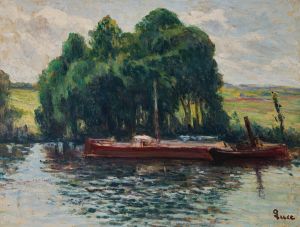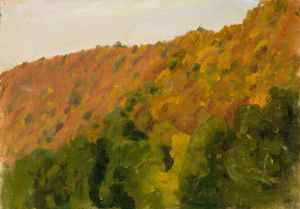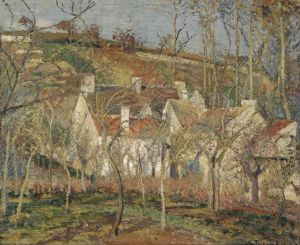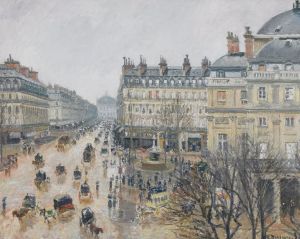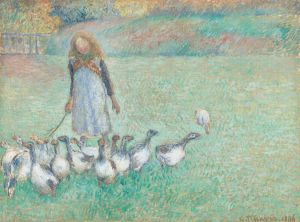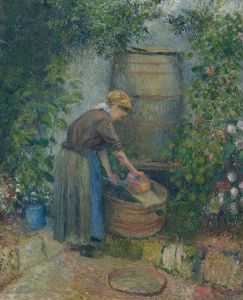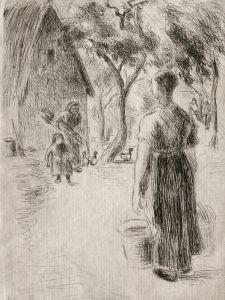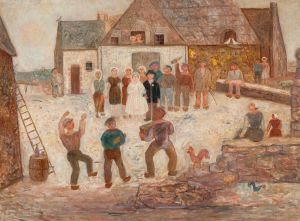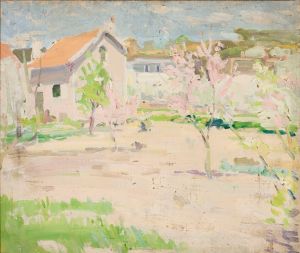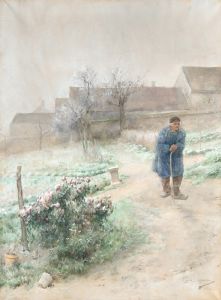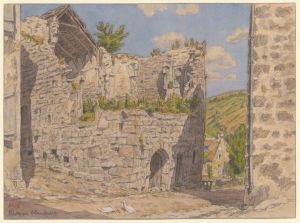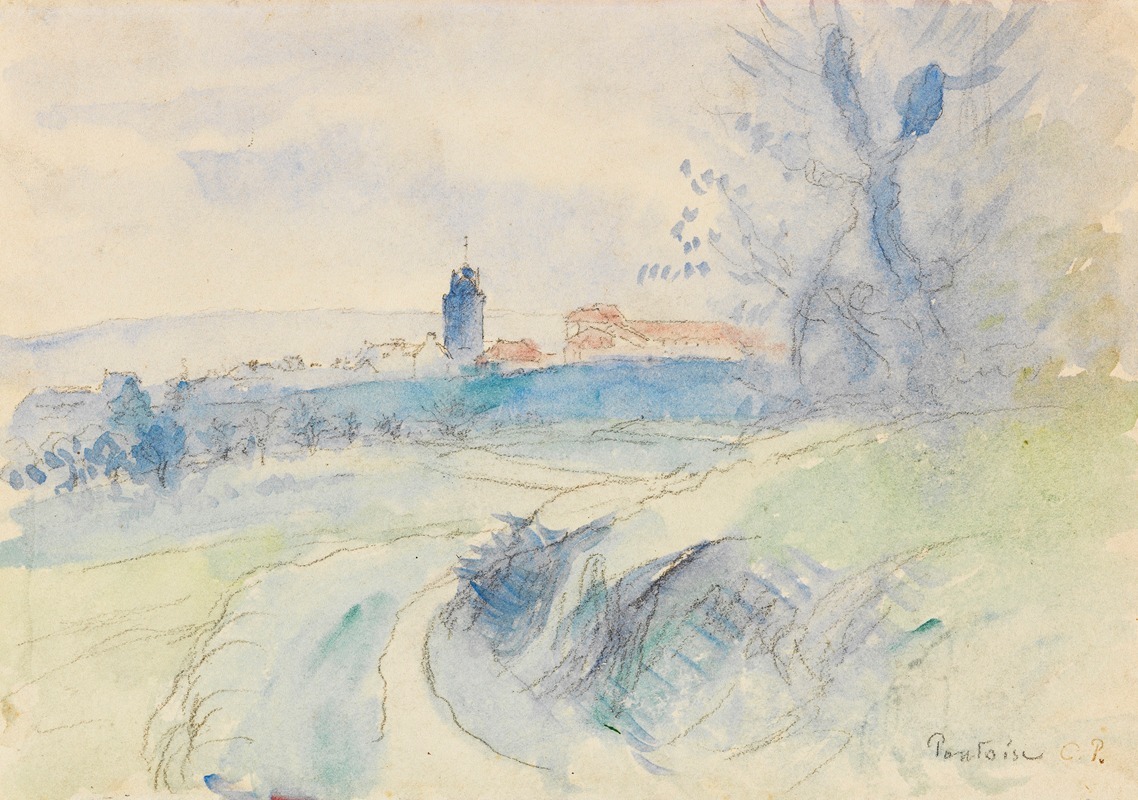
Pontoise
A hand-painted replica of Camille Pissarro’s masterpiece Pontoise, meticulously crafted by professional artists to capture the true essence of the original. Each piece is created with museum-quality canvas and rare mineral pigments, carefully painted by experienced artists with delicate brushstrokes and rich, layered colors to perfectly recreate the texture of the original artwork. Unlike machine-printed reproductions, this hand-painted version brings the painting to life, infused with the artist’s emotions and skill in every stroke. Whether for personal collection or home decoration, it instantly elevates the artistic atmosphere of any space.
Camille Pissarro, a pivotal figure in the Impressionist movement, painted "Pontoise" during a period when he was deeply engaged with the landscapes of rural France. Pissarro, born on July 10, 1830, in the Danish West Indies, moved to Paris in 1855, where he became an integral part of the Impressionist circle. His work is renowned for its exploration of rural and urban landscapes, capturing the subtle interplay of light and atmosphere.
"Pontoise" is one of the many works Pissarro created while living in the town of Pontoise, located northwest of Paris. He moved there in 1866 and remained until 1883, a period during which he produced a significant body of work that contributed to the development of Impressionism. Pontoise, with its picturesque scenery and rural charm, provided Pissarro with a wealth of inspiration. The town and its surroundings became a recurring subject in his paintings, allowing him to explore the changing seasons and the effects of light on the landscape.
In "Pontoise," Pissarro employs his characteristic loose brushwork and a vibrant palette to depict the serene beauty of the French countryside. His technique involves short, broken brushstrokes that capture the fleeting effects of light and color, a hallmark of the Impressionist style. This approach allows the viewer to experience the scene as a moment in time, emphasizing the transient nature of light and atmosphere.
Pissarro's choice of subject matter often included rural laborers, fields, and village life, reflecting his interest in the everyday lives of ordinary people. This focus on rural scenes was not only a personal preference but also a reflection of the broader Impressionist movement's interest in capturing modern life and the natural world. Pissarro's work in Pontoise is notable for its attention to detail and the way it conveys a sense of tranquility and harmony with nature.
Throughout his career, Pissarro maintained a commitment to painting en plein air, or outdoors, which allowed him to observe and capture the natural world with immediacy and authenticity. This method was central to the Impressionist ethos and is evident in the spontaneous and lively quality of his paintings from this period.
"Pontoise" exemplifies Pissarro's ability to blend his keen observational skills with a deep appreciation for the landscape. His work from this time not only contributed to the evolution of Impressionism but also laid the groundwork for future developments in modern art. Pissarro's influence extended beyond his own paintings, as he played a crucial role in mentoring younger artists, including Paul Cézanne and Paul Gauguin, who would go on to become significant figures in their own right.
In summary, Camille Pissarro's "Pontoise" is a testament to his mastery of the Impressionist style and his dedication to capturing the essence of rural France. Through his innovative use of color and light, Pissarro invites viewers to experience the beauty and tranquility of the countryside, making "Pontoise" a significant work in the history of art.





